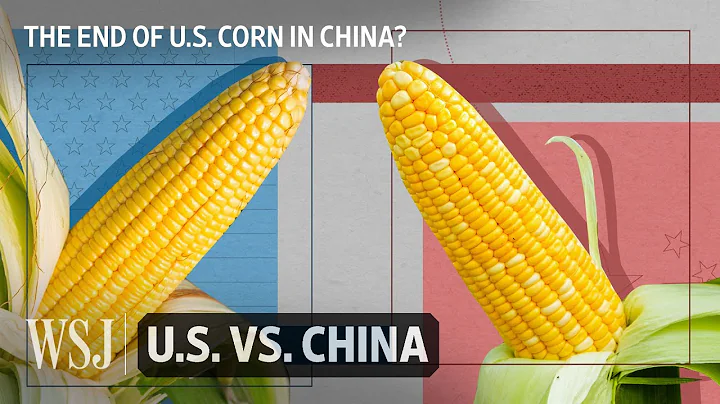worrying greening
Now when talking about global warming and carbon emissions, greening projects and reducing carbon emissions is always an inseparable topic.
China has been committed to greening projects and global greening actions for more than 40 years, and has now achieved very gratifying results.
Mu Us Sandy Land can be said to be a textbook case of greening projects. Years of unremitting efforts have kept the area away from the threat of sand erosion, and eventually became a geomantic treasure.
At the same time, our country has implemented many policies in the past to help farmers who were economically harmed by converting farmland to forests . Now we have even shouted the slogan " clear waters and lush mountains are gold and silver mountains ".

It can be seen that we have a very firm will in reducing carbon emissions and greening projects. In addition, internationally, China's greening results are obvious to all. The greening that contributed a quarter of has put China at the forefront of the world. .
Of course, China is not alone in the world’s greening projects.
China's neighbors - India , also have very surprising results.
This can be seen in the satellite of NASA. Compared with the past 20 years, the world has become greener, and the main source of greening is China and India .

The research team at Boston University has been using satellite data to record greening phenomena since the mid-1990s.
With the help of the medium-resolution imaging spectrometer, the researchers obtained accurate information at high resolution.
Overall, the world's greening has added an area of the Amazon rainforest in the past 20 years. Compared with the beginning of 2000, there are more than 55 million square kilometers of greening area every year.

Related research points out that China and India account for one third of the world's total green area, which is equivalent to 9% of the earth's land area.
Indeed, since the 1990s, our country has begun to mobilize nationwide tree planting activities to cope with sand erosion, climate change and air pollution.
However, NASA also pointed out the difference between China and India's greening . For China, greening projects are mainly reflected in returning farmland to forests, with the purpose of reducing soil erosion.
And India is more about "intensive" planting . This agricultural production method makes India look "greener" on satellite data.

Although the two data look gratifying, and India's agricultural greening seems to be more " environmentally friendly " than China's, in fact experts are very worried about in India. Why is this?
The impact of intensive planting
Future changes in greening trends depend on a variety of factors, including global scale and local human levels.
For example, groundwater irrigation has contributed to increased food production in India, but this trend could change quickly if groundwater is depleted.

Judging from the agricultural methods , India's intensive planting has led to the emergence of large-scale greening in India, which accounts for 82% of India's greening, while China only has 32%.
As a major agricultural exporter, India exports a large amount of grain every year. Since 2000, , India's agricultural output has been increasing every year, but this has also put land pressure increasing.

Population growth is also a very serious problem in India.
Therefore, relevant researchers are worried about whether this phenomenon will have a negative impact on environmental ecosystems in other places. In addition, in terms of the overall global trend, the greenhouse effect has not slowed down yet.
Carbon dioxide in the atmosphere is still increasing, which leads to better forest growth trends in the north than in the south.

Intensive planting is now the mainstream production method
For Western society, mitigating the impact of climate change is one of the main challenges that countries face.
But in India , the impact of climate change is not a priority, India's development model has been consistent with the farm-to-factory model.
According to this development model, many people migrate from villages and towns to cities , while industrialization and urbanization drive development.
However, the impact of floods on India has made solving agricultural development a primary issue, and during this period, India's carbon emissions problem has also increased.

According to research by the Institute of Man and Nature, India is one of the three major countries that emits greenhouse gases , accounting for 6.8% of the world's total emissions. If India continues to follow this old development model .
Then as the world’s carbon emissions tasks advance, India’s carbon emissions will increase to 7 billion tons.
Therefore, many scholars are worried about the current intensive planting in India. In fact, not only the international side, but India itself also feels uncomfortable with this planting method.
Let’s first briefly understand what intensive planting is?

Intensive cultivation in India
In fact, this advanced-sounding cultivation technology has been practiced around the world more than 4,000 years ago, and then spread to Europe, Latin America and China.
Simply put, intensive planting allows crops to be planted more intensively, and increases crop yields through intensive management.
Although we have mentioned the impact of this planting technology on India earlier, this method also has many benefits in terms of crop production.
For example, planting more companion plants, such as planting plants that require insect pollination, on the other hand, also benefits from insects or plants, making the growth trend of another plant better .

Intensification brings about better land use, reduces land waste, and intensive crops result in relatively fewer weeds.
This is also reflected in the irrigation of crops. Although more plants are planted together, there are more places to obtain water.
Generally speaking, , this agricultural production method has many advantages in management and production. Therefore, in India, a large agricultural country, intensive planting methods are widely respected.
But why did this method eventually become a hidden danger in the future, and even affect future development.

Trends in Indian Agriculture
Crop cultivation usually faces a problem in soil health due to intensive farming, over-absorption of nutrients by the crops and less supplementation through organic and inorganic sources.
This makes soil fertility decrease , soil abuse is serious , and ultimately leads to land fatigue .

Soil health affects plant growth
As far as agricultural production is concerned, decreased soil health is generally considered to be one of the reasons for stagnation or decline in crop yields.
and The Indian Space Research Organization found in a 2016 related study that more than 100 million hectares of land were suffering from various forms of degradation, of which water erosion was the main cause.

The increasingly impoverished soil
due to water erosion has brought about the loss of organic carbon, nutrient imbalance, and soil hardening. In addition, it has also led to the accumulation of heavy metals and pesticide pollution in the land.
In addition, eroded soil leads to reservoir siltation, thereby further reducing reservoir capacity and ultimately further affecting related irrigation areas.
According to statistics from relevant Indian departments, due to the impact of water erosion, India's main crops will lose 51,340 tons of every year, and the economic loss is of 5.2053 billion rupees.
Repeated floods have caused salinization of a lot of land, and will also lead to the emergence of idle land.

Changes brought about by water erosion
Earlier we talked about the productivity shifts brought about by the rural and urban population in India's current development process.
With the advancement of urbanization, soil poisoning caused by chemical substances is also further increasing.
An increasing amount of municipal and industrial waste is being dumped into the soil, and most of the heavy metals in it are carcinogenic.
In the research report in 2017, it was found that Indian agriculture also experienced a shortage of nitrogen fertilizers . Punjab and other places have already experienced serious nitrogen fertilizer deficiencies.
In addition, India also uses excessive amounts of nitrogen fertilizer. This extreme polarization has warned that Indian agriculture needs to seek a new development route.

The lack and abuse of nitrogen fertilizer is also a problem in Indian agriculture today.
NASA learned about the status of global greening during this mission survey, but it also reminded us that agriculture is crucial to today's world and it is still It is the basis for the development of everything.
Faced with the increasingly severe climate problem and potential food crisis in the future, this issue is not only something that India needs to consider, it is also a dilemma that all mankind must face. How
can get out of the predicament, perhaps the future solution lies now.











![Source: Taiwan Strait Network ◆ Mainland experts Wei Ming (left) and Wu Honglin (center) visited on the morning of the 2nd [Tuantuan] (Taiwan media photo) Comprehensive reports from Global Network, China Review Network, and Taiwan media on November 2 that the giant panda "Tuantua - DayDayNews](https://cdn.daydaynews.cc/wp-content/themes/begin/img/loading.gif)









